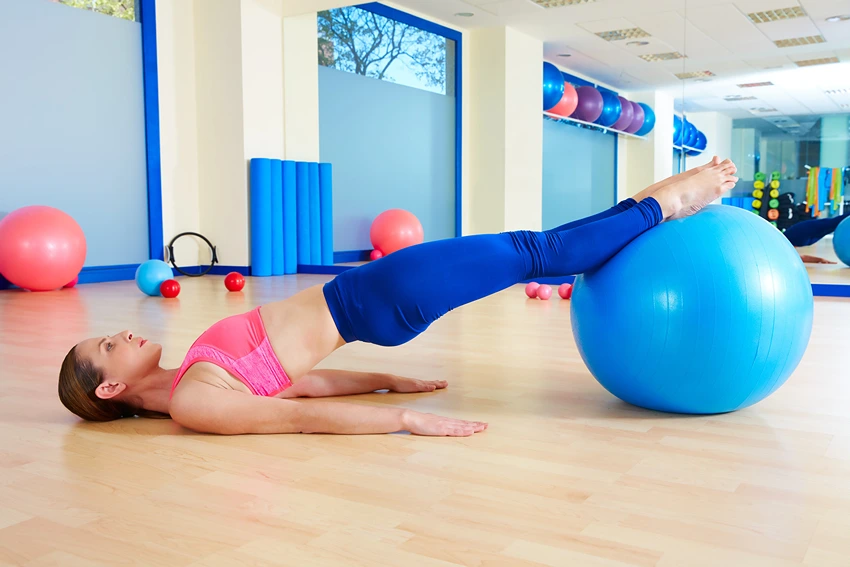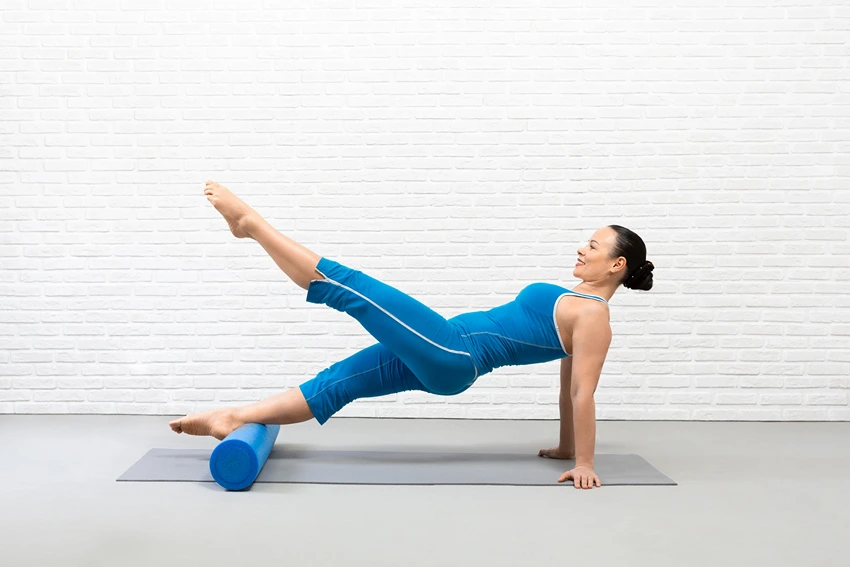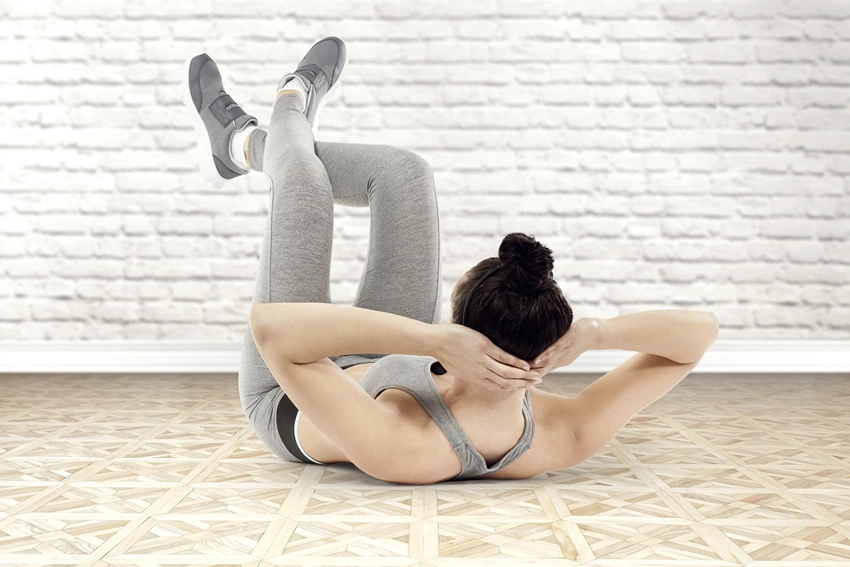At Rac Women, we understand the pivotal role that pelvic floor health plays in the well-being of women. Our expertise in women’s health has shown us that a strong pelvic floor is essential not only for core stability but also for vital functions such as bladder control and sexual health. Through dedicated practice of pelvic floor exercises, many women can achieve significant improvements in their quality of life.
In This Article
Understanding Pelvic Floor Health

The pelvic floor muscles are a group of muscles that support the pelvic organs, including the bladder, intestines, and uterus in women. These muscles are key to maintaining continence, supporting pregnancy, and ensuring sexual function. However, like any other muscles in the body, they can become weakened or overly tight, leading to a range of health issues.
The Importance of Pelvic Floor Muscles
Pelvic floor muscles play a crucial role in:
- Bladder and bowel control: They help to maintain continence.
- Sexual function: A strong pelvic floor can enhance sexual sensation and orgasm.
- Support during pregnancy and childbirth: They support the uterus and baby during pregnancy and assist in the birthing process.
Common Pelvic Floor Issues
Women may experience pelvic floor issues due to various reasons such as childbirth, aging, and high-impact sports. These issues can manifest as:
- Urinary incontinence
- Pelvic organ prolapse
- Reduced sexual sensitivity

Anatomy of the Pelvic Floor
Understanding the anatomy of the pelvic floor is crucial for identifying and effectively treating its dysfunction.
Structure and Function
The pelvic floor is composed of layers of muscle stretching like a hammock from the tailbone to the pubic bone. Its functions include:
- Supporting pelvic organs
- Assisting in urinary and fecal continence
- Facilitating childbirth
Benefits of Pelvic Floor Exercises
Pelvic floor exercises, also known as Kegel exercises, offer numerous benefits for both preventative and therapeutic purposes.
For Women: Pre and Post Pregnancy
- Preventative: Strengthening the pelvic floor can prevent issues related to pregnancy and childbirth.
- Therapeutic: Postpartum exercises can aid in recovery and restore muscle tone.
For Men: Post Prostate Surgery and Incontinence
- Post-surgery recovery: Men can benefit from pelvic floor exercises to regain bladder control.
- Incontinence management: Regular practice can help manage and sometimes resolve incontinence.

Identifying Pelvic Floor Dysfunction
Recognizing the signs of pelvic floor dysfunction is the first step towards recovery.
Symptoms of a Weak Pelvic Floor
- Involuntary leakage of urine
- A feeling of heaviness in the pelvic area
- Difficulty with bowel movements
Hypertonic vs. Hypotonic Muscles
- Hypertonic: Muscles that are too tight, leading to pelvic pain and difficulty with bowel movements.
- Hypotonic: Weakened muscles that contribute to incontinence and organ prolapse.
Rac Women’s Expert Approach to Pelvic Floor Strengthening
At Rac Women, we advocate a holistic approach to pelvic floor health, emphasizing the importance of a tailored exercise regimen.
Our Philosophy on Pelvic Health
We believe in empowering women through education and personalized care, ensuring that each individual’s needs are met with the utmost expertise.
Customized Exercise Regimens
Our specialists design exercise programs that are:
- Personalized: Tailored to individual health status and goals.
- Progressive: Gradually increasing in intensity to build strength and endurance.
- Integrative: Incorporating pelvic exercises into daily activities for sustainable practice.

Basic Pelvic Floor Exercises
Starting with basic exercises is essential for building a foundation of pelvic floor strength.
Kegels: Technique and Variations
- Technique: Tighten the muscles you would use to stop urinating. Hold for a few seconds, then release.
- Variations: Perform quick pulses or maintain the contraction for longer periods to challenge the muscles.
Breathing Exercises for Pelvic Control
- Diaphragmatic breathing: Focuses on engaging the pelvic floor muscles in coordination with deep breathing.
- Synchronized movements: Combine pelvic floor contractions with breath work for enhanced control.
Advanced Techniques and Exercises
As proficiency increases, more challenging exercises can be incorporated.
Incorporating Equipment: Swiss Balls and Resistance Bands
- Swiss balls: Improve core stability and engage the pelvic floor muscles.
- Resistance bands: Add resistance to leg movements to strengthen the pelvic floor.
Lunges and Squats: Pelvic Floor Integration
- Lunges: Strengthen the glutes and thighs while engaging the pelvic floor.
- Squats: A compound movement that, when done correctly, activates the pelvic floor muscles.
Creating a Pelvic Floor Exercise Routine
Developing a consistent routine is key to achieving and maintaining results.
Daily Exercise Plans
- Morning routine: Incorporate pelvic floor exercises into your morning stretch.
- Throughout the day: Use opportunities like sitting in traffic or standing in line to practice discreet pelvic floor contractions.
Long-term Pelvic Health Strategies
- Regular check-ins: Monitor your pelvic floor strength and adjust your routine as needed.
- Professional guidance: Work with a pelvic health specialist to refine your technique and progress your exercises.

Advanced Pelvic Floor Strengthening Techniques
As you become more comfortable with basic pelvic floor exercises, it’s important to progress to more advanced techniques to further strengthen and maintain pelvic floor health.
Progressive Overload for Pelvic Floor Muscles
- Incremental Increase: Gradually increase the duration and intensity of contractions.
- Weighted Exercises: Use vaginal weights or cones to add resistance.
Dynamic Pelvic Floor Workouts
- Functional Movements: Incorporate pelvic floor contractions into functional movements like walking or climbing stairs.
- Pilates and Yoga: These disciplines include specific poses and exercises that enhance pelvic floor strength.
| Exercise Type | Description | Benefits |
|---|---|---|
| Pilates | Focuses on core strength, including the pelvic floor. | Improves muscle tone and control. |
| Yoga | Includes poses that encourage pelvic floor engagement. | Enhances flexibility and strength. |
Pelvic Floor Exercise for Different Life Stages
The pelvic floor’s needs change at different stages of life, and so should the approach to exercising it.
During and After Pregnancy
- Antenatal Exercises: Tailored to support the pelvic floor and prepare for childbirth.
- Postnatal Recovery: Focus on gentle re-strengthening of the pelvic floor post-delivery.
Menopause and Beyond
- Hormonal Considerations: Address the impact of estrogen on pelvic floor tone.
- Ongoing Maintenance: Emphasize the importance of continued exercise for pelvic health into older age.
Frequently Asked Questions
- Involuntary leakage of urine when coughing, laughing, or exercising.
- A frequent need to urinate.
- A sensation of heaviness in the vagina or rectum.
Yes, by increasing muscle tone and blood flow to the pelvic region, sexual sensation and orgasmic potential can be enhanced.
Ideally, perform them daily, incorporating them into your regular fitness routine for the best results.
Absolutely, men can see improvements in urinary control, especially after prostate surgery, and potentially in erectile function.
Incorporating Pelvic Floor Health into Overall Wellness
At Rac Women, we advocate for a holistic approach to health, and pelvic floor wellness is a significant part of that.
Mind-Body Connection
- Mindfulness: Engage in mindful practice of pelvic floor exercises to enhance the mind-body connection.
- Stress Management: Reduce the impact of stress on the pelvic floor through relaxation techniques.
Nutrition and Hydration
- Hydration: Adequate water intake is crucial for urinary health.
- Nutrition: A balanced diet supports overall muscle health, including the pelvic floor.
Staying Informed and Empowered
Education is power, and staying informed about pelvic floor health is key to empowerment.
Workshops and Seminars
- Community Education: Attend workshops to learn more about pelvic health.
- Online Resources: Utilize reputable online resources for continued learning.
Professional Support
- Pelvic Floor Physiotherapy: Seek professional help for personalized care.
- Regular Screenings: Include pelvic floor check-ups in your regular health screenings.
Ellen Crandall
Meet Ellen, your fitness compass in the world of athletics, training, and gym culture. With a commitment to well-being and a penchant for all things workout-related, Ellen is here to guide you on your journey to a healthier, fitter you. Join the fitness revolution, led by Ellen, and embrace the power of an active lifestyle.




